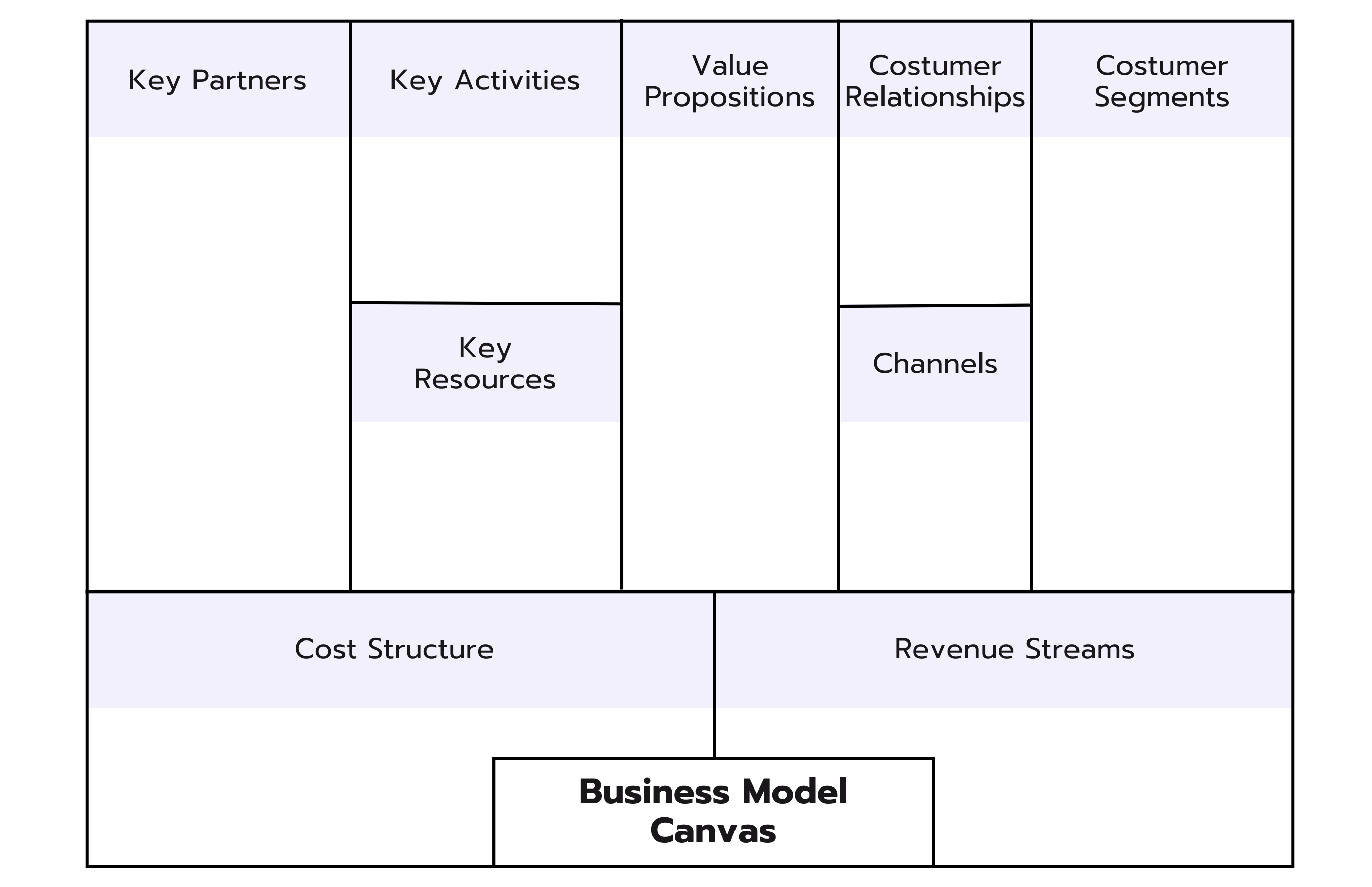Today, disruptive technologies and rapidly changing customer preferences have redefined the way we work. This is where the Business Model Canvas (BMC) comes into play. It is an effective method for analyzing and designing business models. Originally developed by Strategyzer, it has become an indispensable tool for consultants worldwide. ⚒️✨
What is the Business Model Canvas?
The Business Model Canvas was developed by Alexander Osterwalder and Yves Pigneur as a strategic management and entrepreneurial tool. It was first introduced in their 2010 book "Business Model Generation." This innovative model revolutionized how companies analyze, design, and communicate their business models.
The main purpose of the Business Model Canvas is to provide a holistic view of a company’s value proposition, target customers, revenue streams, and key activities in a concise and easily understandable format. By presenting these essential elements on a single page, the Canvas allows entrepreneurs, startups, and established corporations to effectively visualize and communicate their business models.
The nine key elements of the Business Model Canvas work together to provide a comprehensive overview of how a business creates, delivers, and captures value.
The BMC for Strategic Decision Making
The Business Model Canvas helps make key strategic decisions by presenting the core aspects of a business model in an organized way. Here are six ways the Canvas supports this process:
- Comprehensive Analysis: The Canvas allows for a systematic examination of all elements of a business model, providing a clear overview of strengths, weaknesses, and areas for improvement.
- Identifying Opportunities and Risks: By analyzing customers, value propositions, and channels, the Canvas helps uncover opportunities like new trends or risks such as disruptive technologies, enabling proactive action.
- Scenario Planning and Innovation: The Canvas enables the exploration of various scenarios and testing of innovative solutions, allowing you to understand the impact of strategic decisions before implementation.
- Alignment and Communication: It ensures clear communication within teams by creating a common language for discussing the business model. This fosters better collaboration and reduces misunderstandings.
- Risk Management: The Canvas helps identify weaknesses and risks within the business model, allowing for the early development of strategies to mitigate risks and prepare for challenges.
- Performance Measurement and Monitoring: By setting KPIs for each Canvas element, you can measure the success of the business model and continuously optimize it.
The Nine Sections of the BMC

The Business Model Canvas consists of nine essential sections, each providing valuable insights into how a company operates:
- Key Activities: What does your business need to do to keep things running? This could include activities like production, research, service, or platform management. Apply the Pareto Principle here: focus on the key activities that generate the most value!
- Value Proposition: Why should customers choose your offering? This is the special aspect – your product or service that solves problems or fulfills needs. In short: What makes your company unique?
- Customer Relationships: How do you acquire and retain customers? Whether it’s personalized service, community-building, or self-service, each strategy impacts customer satisfaction and loyalty.
- Key Partners: No one does it alone! Who are the key partners that support your business? These could be suppliers, collaborators, or strategic alliances.
- Customer Segments: Who are your target customers? Define your segments by needs, behavior, or preferences to tailor your offering accordingly.
- Cost Structure: What are the fixed and variable costs that keep your business running? A smart cost strategy helps maintain profitability.
- Key Resources: What do you need to fulfill your value proposition? Whether it’s capital, expertise, technology, or a strong team – without these resources, your business model won't work.
- Channels: How do you reach your customers? Online, offline, via social media, or through partners? The right mix makes the difference.
- Revenue Streams: How does your business make money? One-time sales, subscriptions, licenses, or ads – there are many ways to generate revenue. It’s worth taking a look at the product lifecycle!
Understanding each of these sections of the Business Model Canvas provides valuable insights into the critical components of a business model. By analyzing and refining these elements, consultants can help businesses develop robust, effective, and innovative strategies that create success and sustainable competitive advantage. 📈
How Consultants Can Apply the BMC Specifically
Here are some examples of when and how the Strategyzer model can be used:
- Developing New Business Models: The Business Model Canvas is ideal for creating new business models from scratch. It allows consultants to focus on key elements and develop innovative ideas.
- Analyzing Existing Business Models: The Business Model Canvas can also be used to analyze and understand existing business models. It helps identify strengths and weaknesses and uncover opportunities for improvement.
- Conducting Competitive Analysis: With the Business Model Canvas, consultants can analyze the business models of competitors. This provides insights into competitors' strategies and helps clients strengthen their own market position.
- Communication and Presentation Tool: The Business Model Canvas is not just an analysis and design tool but also an effective communication and presentation tool. It allows business models to be presented in a simple and understandable way.
The Business Model Canvas for Consultants
The Business Model Canvas is a practical tool for consultants to analyze and optimize business models. It provides a structured approach that aids in developing new models and improving existing ones.
For startups and innovative companies, it helps develop value propositions, define target customers, and create distribution channels. For established companies, it highlights areas for optimization, such as cost reduction and new revenue streams.
It also supports competitive analysis and helps identify gaps and opportunities. Thanks to its visual structure, the Canvas facilitates clear communication and enhances collaboration.
Using the Canvas, consultants can make strategic decisions, identify strengths and weaknesses, and develop innovative solutions that ensure the long-term success of their clients.
This should now be fully translated. Let me know if you'd like to tweak anything further!

